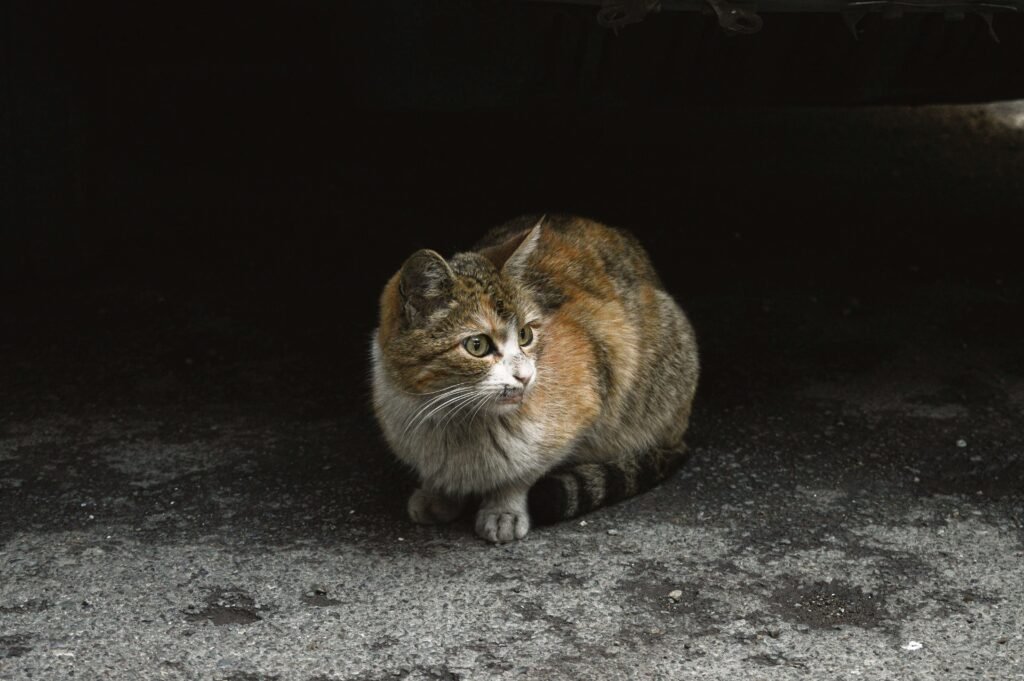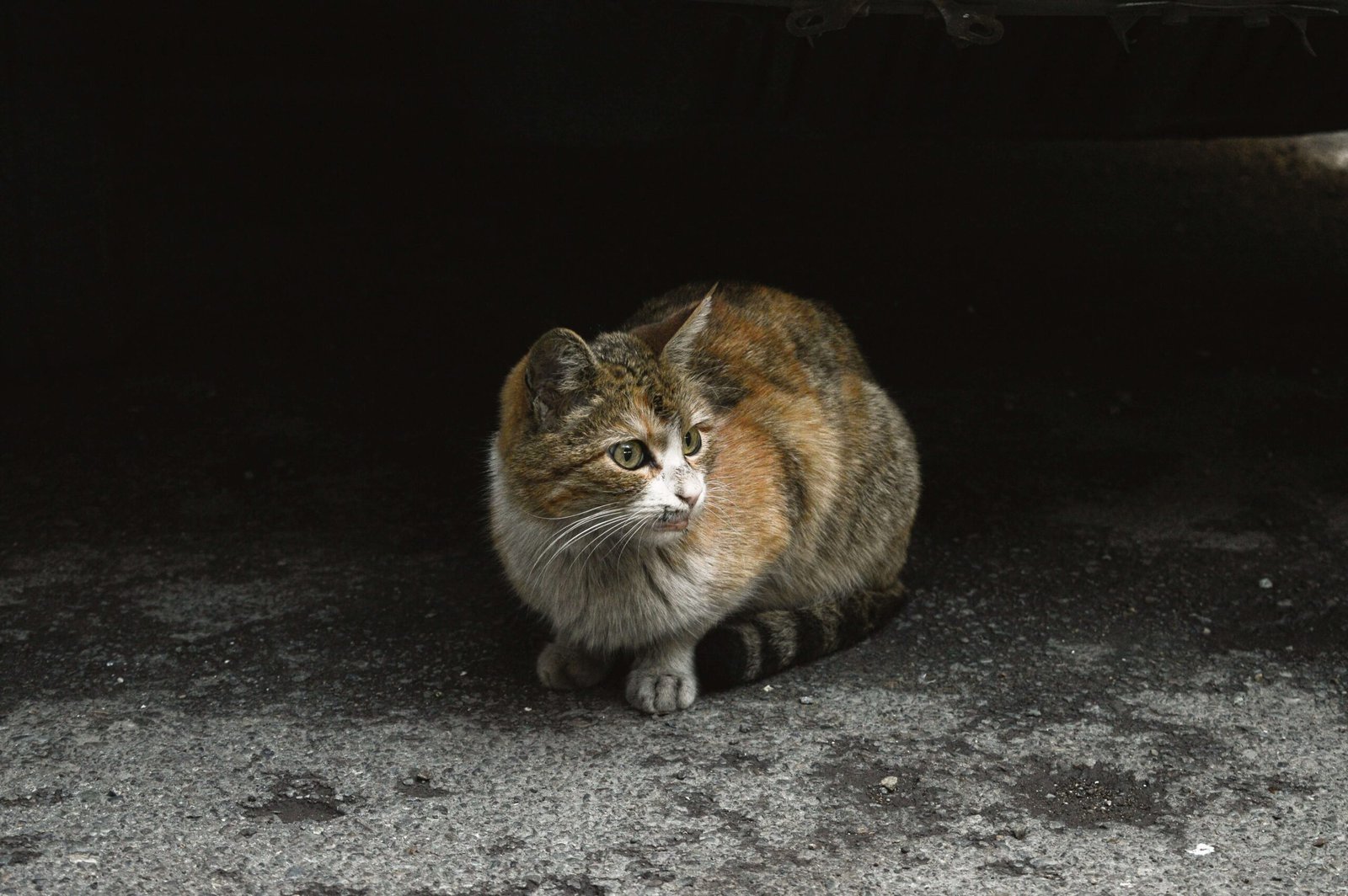Why Does My Cat Bunny Kick Me? Understanding This Quirky Behavior
If you’ve ever been on the receiving end of a cat’s bunny kick, you know it can be both amusing and slightly confusing. This behavior, where your cat wraps their front paws around your hand or arm and kicks vigorously with their back legs, might seem aggressive or playful—or perhaps both. But what exactly does it mean when your feline friend performs this quirky move? Is it a sign of affection, frustration, or something else entirely?
In this blog post, we’ll explore the reasons behind why your cat bunny kicks you, decode their intentions, and offer tips on how to respond. By understanding this unique behavior, you can strengthen your bond with your cat and ensure both of you enjoy safe and positive interactions.
Common Reasons Why Cats Bunny Kick
Cats use bunny kicking as a way to communicate or express themselves in various situations. Here are some common explanations for this behavior:
Playful Instincts
Bunny kicking is often a remnant of kittenhood play, where cats practice hunting techniques by grabbing and kicking.Hunting Simulation
When your cat bunny kicks, they may be mimicking the action of subduing prey during a hunt.Affection and Bonding
Some cats use bunny kicking as a way to show affection or engage with their favorite human.Overstimulation or Irritation
If your cat feels overwhelmed or irritated during petting, they might bunny kick as a warning sign.Territorial Behavior
Occasionally, bunny kicking can be a way for cats to assert dominance or mark their territory.
Understanding these motivations can help you interpret your cat’s actions and respond appropriately.
Signs That Your Cat Is Playing vs. Being Aggressive
It’s important to distinguish between playful bunny kicking and more serious aggressive behavior. Here’s how to tell the difference:
Relaxed Body Language
A playful cat will have relaxed ears, a swishing tail, and an overall calm demeanor while bunny kicking.Soft Kicks Without Claws
Playful kicks are usually gentle and don’t involve extended claws or biting.Accompanying Purring
If your cat is purring or making happy noises, the bunny kick is likely part of their playful routine.Aggressive Posture
An aggressive cat may have flattened ears, dilated pupils, and a tense body posture while bunny kicking.Biting or Scratching
If the bunny kick is accompanied by biting or scratching, it’s a clear sign your cat is feeling defensive or upset.
Recognizing these signs can help you gauge your cat’s mood and avoid escalating the situation.
Check this guide 👉Why Does My Cat Meow in the Litter Box? Best 7 Tips!
Check this guide 👉Why Does My Cat Sit on My Face? Best 7 Expert Tips!
Check this guide 👉Why Does My Cat Not Like Me? Best 7 Expert Tips!

Behavior | Possible Meaning |
|---|---|
Playful Bunny Kicking | Simulating hunting or expressing joy |
Gentle Kicks Without Claws | Showing affection or engaging in light play |
Accompanying Purring | Indicating happiness and contentment |
Flattened Ears and Hissing | Signaling fear, aggression, or overstimulation |
Biting During Bunny Kick | Warning sign of irritation or discomfort |
How to Respond to Bunny Kicking
When your cat bunny kicks you, your response can influence their behavior in the future. Here’s how to handle it effectively:
Redirect Their Energy
Provide toys like stuffed mice or interactive wands to redirect their hunting instincts away from your hands.Avoid Reinforcing Aggression
If your cat bunny kicks aggressively, avoid rewarding the behavior by stopping play immediately.Use Positive Reinforcement
Reward calm and gentle behavior with treats or praise to encourage positive interactions.Monitor Petting Sessions
Pay attention to your cat’s body language and stop petting if they show signs of overstimulation.Consult a Behaviorist
If the behavior becomes problematic or frequent, consider seeking advice from a professional cat behaviorist.
By responding thoughtfully, you can manage bunny kicking and ensure it remains a fun, harmless activity.
Preventing Unwanted Bunny Kicking
Prevention is key to minimizing unwanted or aggressive bunny kicking. Here are some strategies to implement:
Provide Adequate Playtime
Engage your cat in regular play sessions to burn off excess energy and reduce the urge to bunny kick.Offer Alternative Outlets
Provide scratching posts, tunnels, or climbing trees to satisfy their natural instincts.Teach Boundaries Early
Train kittens not to use hands or feet as toys to prevent the habit from developing.Respect Their Limits
Learn your cat’s tolerance levels for petting and interaction to avoid triggering overstimulation.Create a Safe Space
Ensure your cat has a quiet, comfortable area to retreat to when they feel overwhelmed.
By taking preventive measures, you can foster a harmonious relationship with your cat and minimize unwanted behaviors.
Understanding Your Cat’s Hunting Instincts
Bunny kicking is deeply rooted in your cat’s natural hunting instincts, which they use to subdue prey. Here’s how this behavior reflects their wild ancestry:
Simulating Predatory Behavior
Cats often bunny kick as part of their “kill bite” technique, using their hind legs to immobilize prey.Practicing Survival Skills
Even though domestic cats don’t need to hunt for food, they still rehearse these behaviors during play.Engaging Their Senses
Bunny kicking allows cats to engage their sense of touch, sight, and movement, mimicking real-life hunting scenarios.Strengthening Muscles
The vigorous kicking motion helps cats maintain flexibility and strength in their hind legs.Expressing Excitement
When your cat bunny kicks, it may simply be an overflow of excitement from their playful mood.
By understanding the connection between bunny kicking and hunting instincts, you can appreciate your cat’s behavior as a nod to their evolutionary past.
How to Safely Play with Your Cat
To prevent unwanted or overly aggressive bunny kicking, it’s important to engage your cat in safe and structured play. Here’s how to do it effectively:
Use Appropriate Toys
Opt for toys like feather wands, stuffed mice, or kicker toys that allow your cat to bunny kick safely.Avoid Hand Wrestling
Never use your hands or feet as toys, as this encourages biting and scratching during play.Set Time Limits
Keep play sessions short and sweet to avoid overstimulation, which can lead to aggressive behavior.Reward Calmness
Praise your cat when they play gently and stop immediately if they become too rough.Teach Boundaries
Use a firm “no” or redirect their attention if they start bunny kicking excessively or aggressively.
By incorporating these tips into playtime, you can ensure your interactions remain fun and injury-free for both you and your cat.
Recognizing Signs of Overstimulation in Cats
Cats can become overstimulated during play or petting, leading to behaviors like bunny kicking or biting. Here’s how to spot the warning signs:
Tail Flicking or Thumping
A rapidly flicking or thumping tail is often a sign your cat is becoming agitated or overstimulated.Flattened Ears
If your cat’s ears flatten against their head, it’s a clear signal they’re feeling defensive or irritated.Dilated Pupils
Wide, dilated pupils indicate heightened arousal, which can quickly turn into aggression.Twitching Skin
Watch for skin rippling or twitching along your cat’s back, as this shows growing discomfort.Sudden Stillness
If your cat freezes or goes rigid, it’s a warning that they’ve reached their limit and may react defensively.
Recognizing these signs early can help you intervene before your cat resorts to bunny kicking or other unwanted behaviors, ensuring a peaceful interaction.
Frequently Asked Questions About Bunny Kicking
Is bunny kicking normal behavior for cats?
Yes, bunny kicking is a natural behavior that stems from their hunting instincts and playful nature.
Should I punish my cat for bunny kicking?
No, punishment can increase stress and worsen the behavior. Instead, focus on redirection and positive reinforcement.
How can I tell if my cat is playing or being aggressive?
Look for signs like relaxed body language and purring for playfulness, versus hissing or biting for aggression.
Can bunny kicking hurt me?
While playful kicks are usually harmless, aggressive kicks with claws can cause scratches or minor injuries.
What should I do if my cat bunny kicks too hard?
Stop the interaction immediately, provide alternative toys, and reward gentler behavior in the future.
Embracing Your Cat’s Unique Personality
Bunny kicking is just one of the many fascinating behaviors that make cats such intriguing companions. Whether it’s a playful expression of affection or a signal of overstimulation, understanding the reasons behind this quirky habit can deepen your connection with your feline friend. By responding with patience, consistency, and care, you can ensure that bunny kicking remains a fun and harmless part of your interactions. Remember, every cat is unique, and their behaviors are a reflection of their individual personalities. So, the next time your cat wraps their paws around your arm and starts kicking, take it as a compliment—they trust you enough to share their wild side with you!
Can a Cat Die from a Cold? Best 7 Expert Tips! Learn how to identify, treat, and prevent feline colds while understanding when to seek veterinary care for your cat’s health.
Cat Screaming for Food: Best 7 Expert Tips! Discover effective strategies to manage your cat's food-related vocalizations and create a peaceful feeding routine.
Aspiration Pneumonia in Cats: Best 7 Expert Tips! Discover causes, symptoms, and treatment advice to protect your cat’s respiratory health and ensure a speedy recovery.
Hip Dysplasia in Cats: Best 7 Expert Tips! Discover expert advice on managing hip dysplasia in cats, from symptoms and prevention to treatment options for a happier, healthier feline life.





